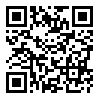Fri, Apr 26, 2024
[Archive]
Volume 8, Issue 2 (2-2018)
MJLTM 2018, 8(2): 151-159 |
Back to browse issues page
Download citation:
BibTeX | RIS | EndNote | Medlars | ProCite | Reference Manager | RefWorks
Send citation to:



BibTeX | RIS | EndNote | Medlars | ProCite | Reference Manager | RefWorks
Send citation to:
B. Istomina O. Language And Social Structure. MJLTM 2018; 8 (2) :151-159
URL: http://mjltm.org/article-1-212-en.html
URL: http://mjltm.org/article-1-212-en.html
Irkutsk State University, Russia
Abstract: (5135 Views)
The relevance of the study is conditioned by the intensification of language contacts, as well as the development and active use of the majority international languages, that significantly narrows the scope of the ethno-national languages and contributes to their devaluation. However, despite of the universalization the actions aimed at the preservation and development of ethnic cultures get more intensive. Dialectically contradictory trends of modern verbal space are caused by the influence of the homogenization of cultural types and ethnic consciousness increase. The purpose of the article is to establish the dependence between the communicative competence and social differentiation of society in the conditions of growing trends of globalization and the spread of assimilation processes. The leading method of this problem study is sociological survey of bilingual population in the areas with a high level of ethnic composition mosaicity (the case of the Siberian region). The sample volume is 1006 people. The survey revealed that at the present stage the formation and development of contacts in the multicultural region is determined by the objective conditions of the social environment, as well as the subjective personal characteristics of linguocultural interaction participants. Communicative competence is influenced by such factors as: national and demographic characteristics, population density, dispersal of ethnic groups in the region, presence of subnational entities, correlation of urban and rural groups, as well as age, socio-status, vocational and educational differentiation and speech orientation of communicants. Urban lifestyle, violation of generations linkage, language pragmatic functions predominance in the minds of its speakers and high socio-professional activity form “social habit” of using a convenient language of an ethnic majority in all the spheres of life, that leads to the spread of receptive, incomplete, highly ineffective forms of language contacts. The information can be applied in the management and politics in order to minimize conflicts in the field of international and interethnic relations and in order to preserve the multiethnic cultural image of a region and state. The authoring are applicable in the field of national and cultural, educational and linguoecological activities to address the ethno-national and ethno-linguistic issues
Keywords: bilingualism, language competence, cross-cultural contacts, speech orientations, spheres of communication, language behavior, language situation
Type of Study: Research |
Subject:
Foreign language teaching and learning
Received: 2018/08/26 | Accepted: 2018/08/26 | Published: 2018/08/26
Received: 2018/08/26 | Accepted: 2018/08/26 | Published: 2018/08/26
References
1. Bloomfield L. Language. – NY, 1933. – 564 p.
2. Goddard C. Discours and Culture/ C. Goddard & Werzbicka A. // Teun A/ van Dijk. Discours as Social interaction // Discours Sudies: A Multidisciplinary introduction. – L: Sage, 1997. – Vol. 2 – P. 231–259.
3. Habermas J. Theorie des Kommunikativen Handelns. – Frankfurt, 1991. – 385 p.
4. Haugen E.A. Study in Bilingual Behavior. – Philadelphia, 1953. – 159 p.
5. Istomina, O.B. (2009). Ethnicity as communicative resource. Bulletin of Buryat State University. Series of Philosophy, Sociology, Political Science, Cultural Studies, 14: 92-96 (in Russian).
6. Istomina, O.B. (2011). The criteria of defining the concept of "native language" in contemporary conditions. Bulletin of Buryat State University. Series of Philosophy, Sociology, Political Science, Cultural Studies, 14A: 74-80 (in Russian).
7. Istomina, O.B. (2012). Language contacts in contemporary Russian society: Essence, forms, tendencies (regional aspect). Ulan-Ude: Buryat State University (in Russian).
8. Jespersen O. The Philosophy of Grammar. London, 1924.
9. Leopold L. Speech development of a bilingual child. – Chicago, 1937. – P. 251.
10. Potebnya, A.A. (1862). Thought and language. In: A.A. Potebnya (1989), Word and myth. Moscow: Pravda, pp. 17-200 (in Russian).
11. Ronga G. Developpement du language observe chez un enfant bilingue. – Paris: Champion, 1913.
12. Boronoev A. O. Russia and Russians: the character of the nation and the fate of the country. - St. Petersburg, 1992. - 142 p.
13. Gumilyov L. N. Geography of an ethnos in a historical period. - L., 1990. - 279 p.
14. Cooley C. H. Human nature and social order. - M., 2000.
15. Narochnitskaya N. A. Russian and Russian in the modern world. - M., 2011. - 416 p.
16. Pevzner M. N., Shirin A. G. Bilingual education in the context of world experience. - Novgorod, 1999. - 96 p.
17. Prokhorov Yu. E. Russians: communicative behavior. - M., 2007. - 328 p.
18. Rybakov S. E. Anatomy of ethnic destructiveness // Herald of MSU. Sociology and Political Science. - 2001. – No. 3. - P. 23-54.
19. Savinov L. V. Interethnic relations in the army // Sociological studies. - 2012. – No. 7. - P. 143-148.
20. Simonyan R. H. Real politics or political talk show (comparative analysis of the situation in Russia and the Baltic countries // Vlast - 2005, No. 6. – P. 30-41.
21. Toshchenko Zh. T. Ethnocracy: history and the present times. Sociological Studies. - M., 2003. - 432 p.
22. Fromm E. Escape from freedom. - M., 1995. - 256 p.
23. Hamnaeva A. Yu. Identity as a socio-philosophical problem: diss. of cand. of philos. sciences. - Ulan-Ude: Buryat State University, 2007.
24. Shcherba L. V. Revisiting bilingualism / L. V. Shcherba // Language system and oral actvity. - L., 1974. - P. 313-318.
25. Schyutz A. Favorites: World glowing sense. - M., 2004. – 1056 p.
26. Iarskaia V. N. My tongue is my enemy: Racist discourse in Russian society // Sociological research. - 2012. – No. 6. – P. 46-54.
| Rights and permissions | |
 |
This work is licensed under a Creative Commons Attribution-NonCommercial 4.0 International License. |





